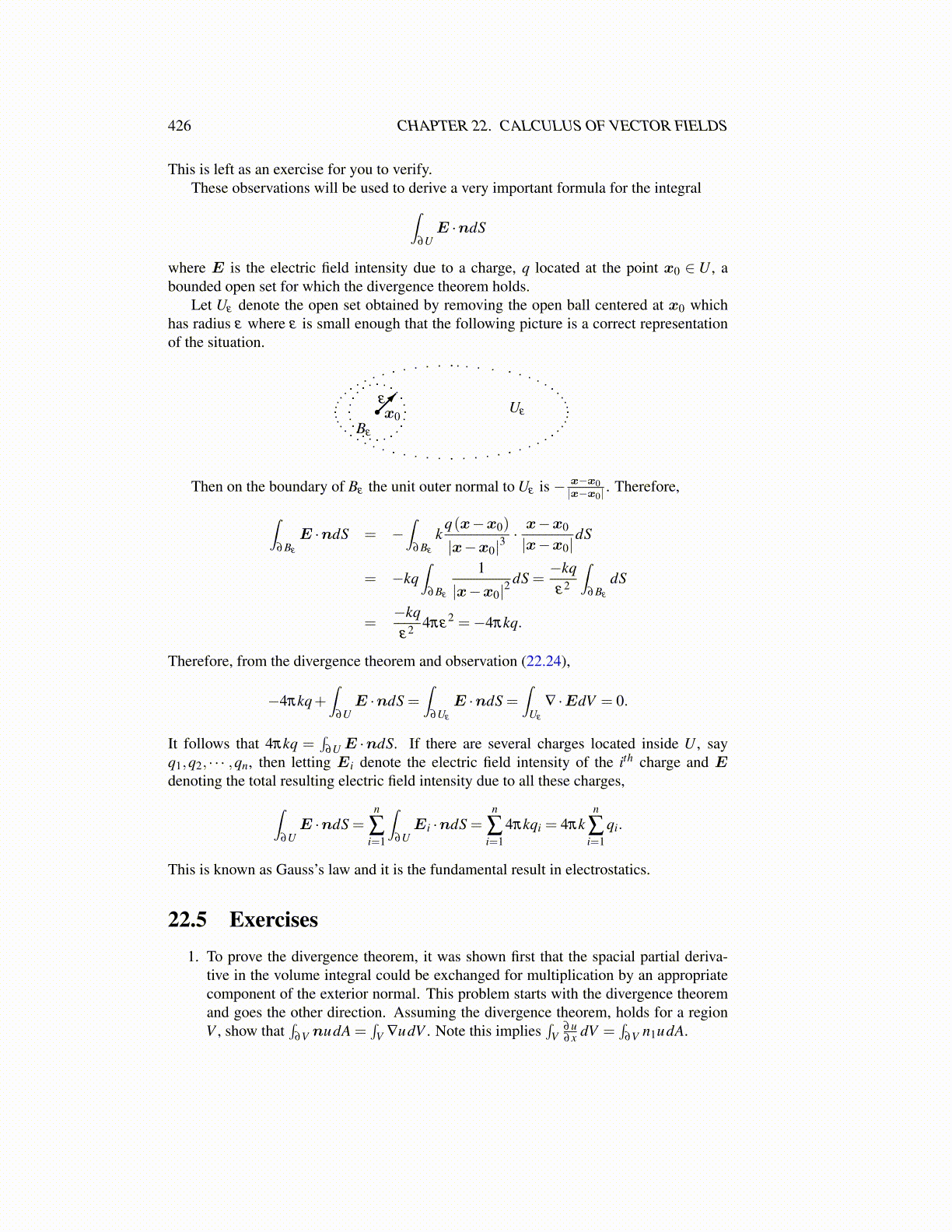
426 CHAPTER 22. CALCULUS OF VECTOR FIELDS
This is left as an exercise for you to verify.These observations will be used to derive a very important formula for the integral∫
∂UE ·ndS
where E is the electric field intensity due to a charge, q located at the point x0 ∈ U , abounded open set for which the divergence theorem holds.
Let Uε denote the open set obtained by removing the open ball centered at x0 whichhas radius ε where ε is small enough that the following picture is a correct representationof the situation.
x0ε Uε
Bε
Then on the boundary of Bε the unit outer normal to Uε is − x−x0|x−x0|
. Therefore,
∫∂Bε
E ·ndS = −∫
∂Bε
kq(x−x0)
|x−x0|3· x−x0
|x−x0|dS
= −kq∫
∂Bε
1
|x−x0|2dS =
−kqε2
∫∂Bε
dS
=−kqε2 4πε
2 =−4πkq.
Therefore, from the divergence theorem and observation (22.24),
−4πkq+∫
∂UE ·ndS =
∫∂Uε
E ·ndS =∫
Uε
∇ ·EdV = 0.
It follows that 4πkq =∫
∂U E ·ndS. If there are several charges located inside U , sayq1,q2, · · · ,qn, then letting Ei denote the electric field intensity of the ith charge and Edenoting the total resulting electric field intensity due to all these charges,∫
∂UE ·ndS =
n
∑i=1
∫∂U
Ei ·ndS =n
∑i=1
4πkqi = 4πkn
∑i=1
qi.
This is known as Gauss’s law and it is the fundamental result in electrostatics.
22.5 Exercises1. To prove the divergence theorem, it was shown first that the spacial partial deriva-
tive in the volume integral could be exchanged for multiplication by an appropriatecomponent of the exterior normal. This problem starts with the divergence theoremand goes the other direction. Assuming the divergence theorem, holds for a regionV , show that
∫∂V nudA =
∫V ∇udV . Note this implies
∫V
∂u∂x dV =
∫∂V n1udA.